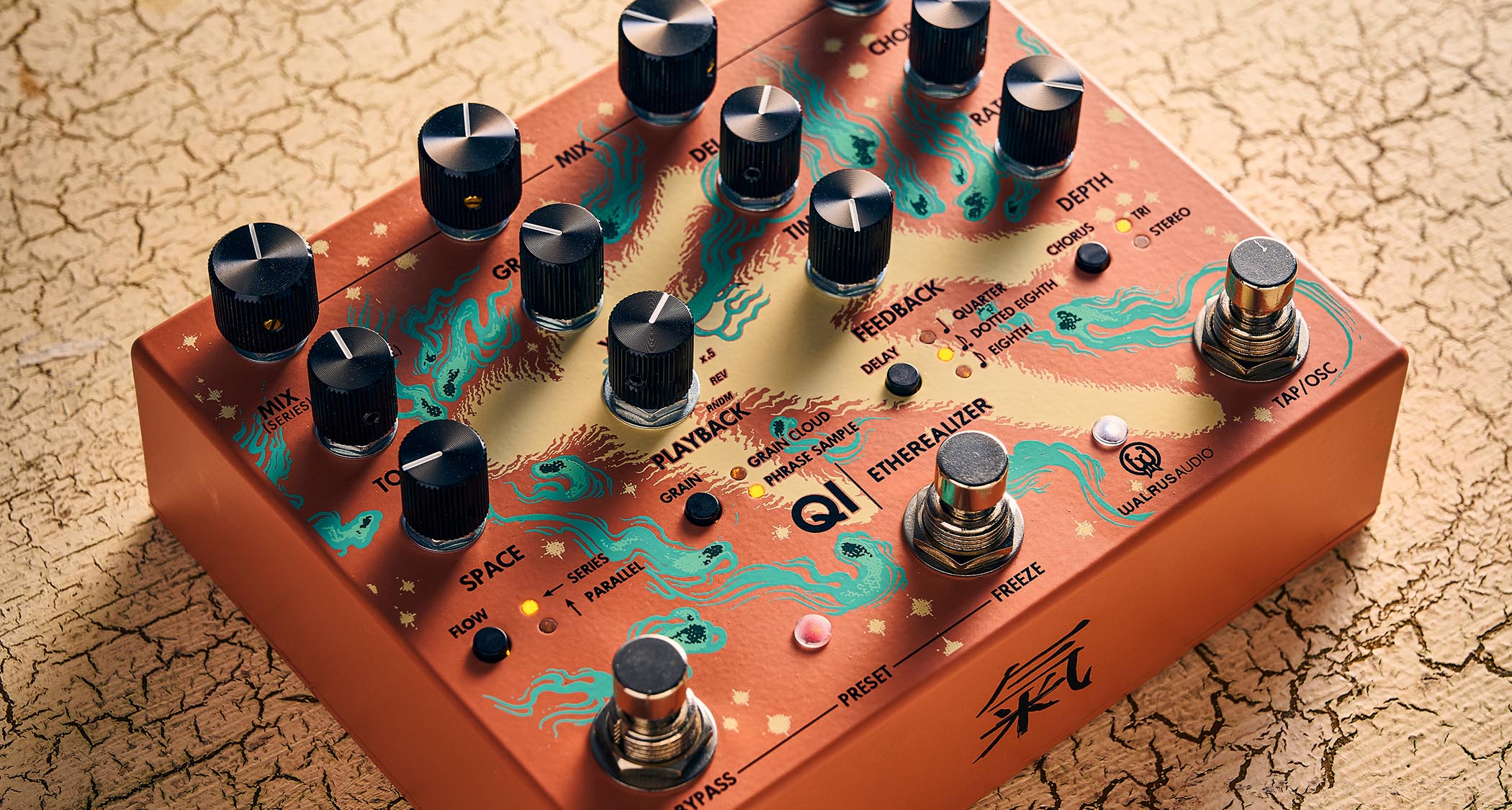Guitar World Verdict
If you have the money (and let’s face it, this isn’t a budget pedal) this could be a flexible asset for your ’board to deliver conventional single or combined chorus / vibrato, delay and reverb effects when desired and the occasional composite fairy dust if the need arises.
Pros
- +
A flexible range of effects in one pedal.
- +
Practical combination options for sonic exploration.
- +
Hands-on WYSIWYG operation.
- +
Onboard presets.
- +
Tap tempo.
Cons
- -
Grain may be one effect too far for some players.
- -
It’s a significant investment.
You can trust Guitar World
What is it?
With ‘Soundscape Generator’ pedals such as the Lore and Fable, Walrus Audio has form when it comes to creating ambient sounds. So what better company for Yvette Young to turn to when looking for a signature pedal?
The result of the collaboration is the Qi Etherealizer. The Qi part, alternately spelt as chi and pronounced ‘chee’, relates to vital life energy and is reflected in the pedal artwork, which depicts a body with energy flowing around it.
This is essentially a multi-effects pedal with four effects – chorus, delay, grain sampler and reverb – that interact in either a serial or parallel configuration. It’s a true stereo pedal, though it can be run in mono, and features three onboard presets.
There’s no provision for an expression pedal, but the multi-tasking footswitches can provide a range of performance options, such as ramping up the reverb or tipping delay repeats over into oscillation. MIDI is implemented, giving access to 128 presets and control of most parameters.
Specs
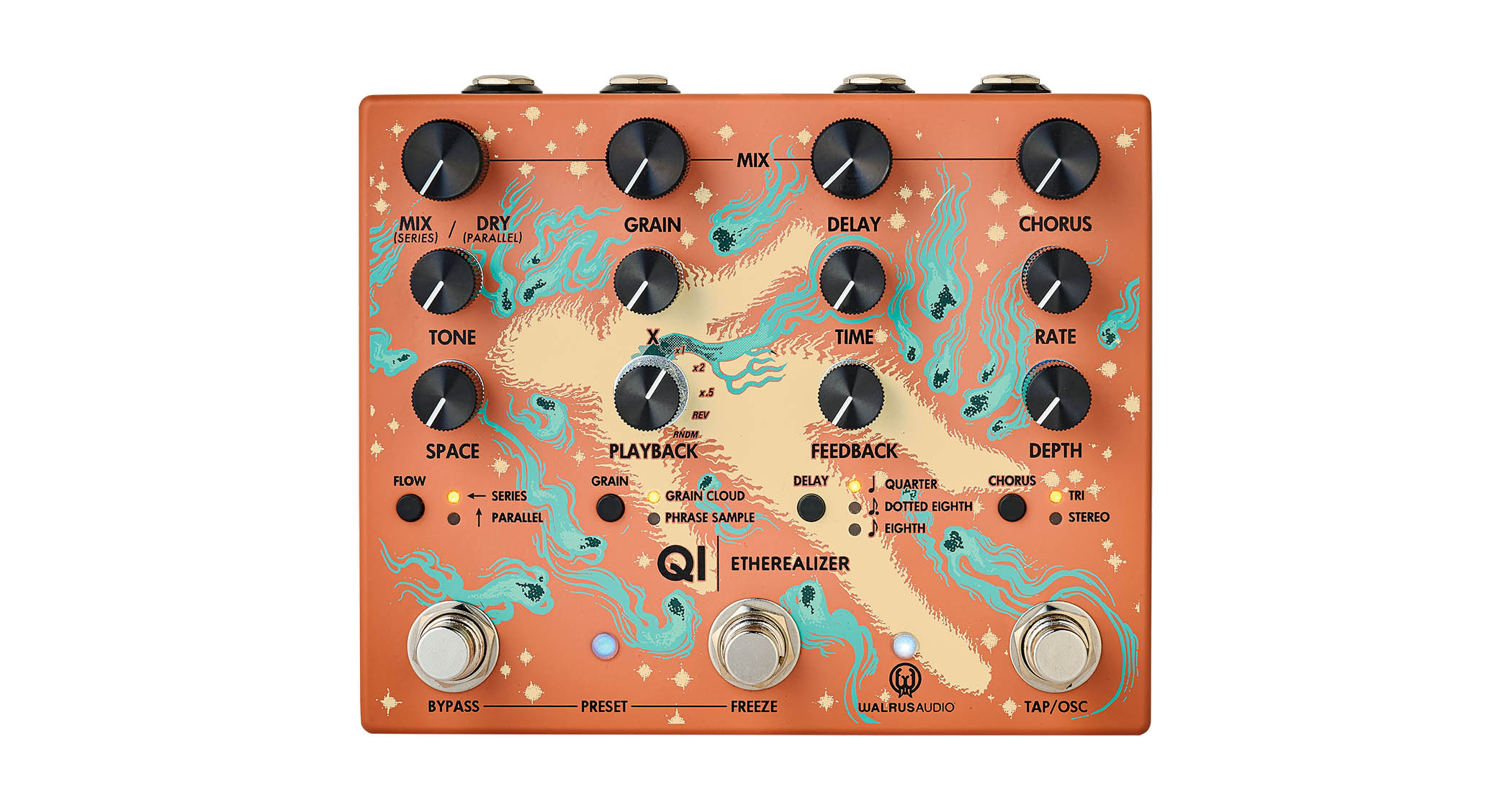
- PRICE: $449 / £449
- ORIGIN: USA
- TYPE: Ambience pedal combining chorus, delay, granular effects and reverb
- FEATURES: Buffered bypass, 3x onboard presets, tap tempo, selectable trails mode
- CONTROLS: Mix/Dry, Tone, Space, Grain Mix, X, Playback, Delay Mix, Time, Feedback, Chorus Mix, Rate, Depth, Flow switch (Series/Parallel), Grain switch (Grain Cloud/Phrase Sample), Delay switch (Quarter/Dotted Eighth/Eighth), Chorus switch (Tri/Stereo), Bypass footswitch, Freeze footswitch, Tap/Osc footswitch
- CONNECTIONS: Standard inputs (Mono L & Stereo R), standard outputs (Mono L & Stereo R), MIDI In, MIDI Thru, USB-C (for firmware updates)
- POWER: 9V DC adaptor (not supplied) 300mA
- DIMENSIONS: 148 (w) x 124 (d) x 58mm (h)
- CONTACT: Walrus Audio
Usability and sounds

If you’re trying to build a composite sound, the first decision you have to make with the pedal is whether you want the effects to run in series or parallel because each can deliver a different sonic outcome. In series, each effect feeds the next like separate pedals on a ’board. The order logically runs from right to left: chorus, delay, grain and reverb.
The Chorus, Delay and Grain sections each have their own Mix knob to proportionally add effect into the signal chain, which then hits the reverb that is controlled by a Space knob that increases the reverb size from a room-like space to humongous ambience.
After the reverb is a tone knob that can roll off top-end, and finally you get a Mix/Dry knob that sets the blend between 100 per cent dry and 100 per cent wet at the output.
All the latest guitar news, interviews, lessons, reviews, deals and more, direct to your inbox!

In parallel mode, the chorus, delay and grain effects process the dry input sound separately, and the individual effects are summed together via their particular Mix knobs, passing through the reverb and the tone knob to the output.
Grain works by sampling portions (grains) of your playing and playing them back, not unlike a trail of delay repeats but a bit glitchier
The Mix/Dry knob in this instance serves to add dry sound into the mix and runs from 100 per cent wet to a point where the dry signal is at unity.
Both instances allow you to dial in an individual effect or any combination using the Mix knobs, but you can also turn the chorus, delay and grain effect on or off by a press-and-hold on the button below its knob array.
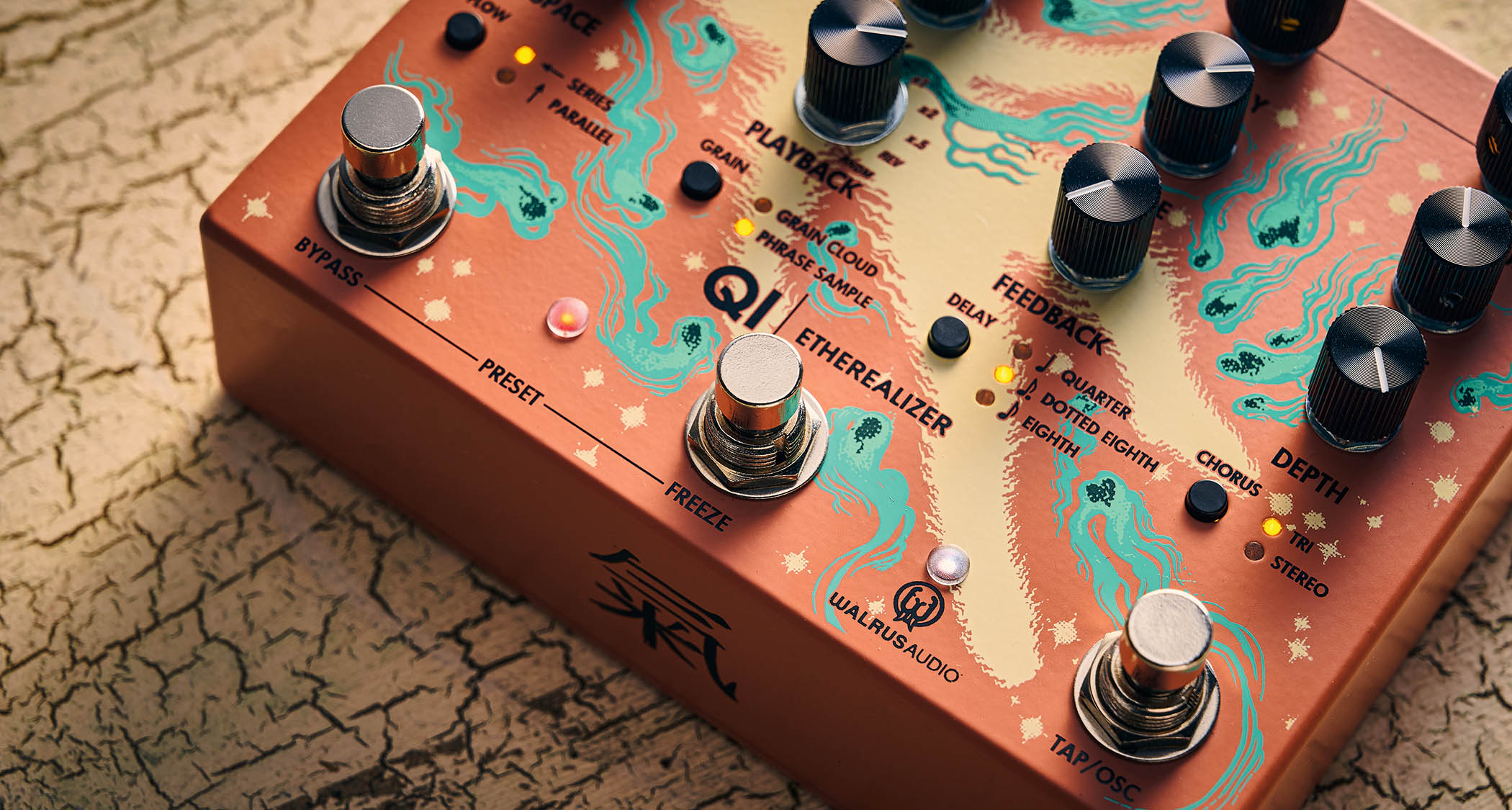
The chorus has the usual Rate and Depth knobs and offers a choice of Tri chorus with three delay lines, or Stereo chorus, both of which sound suitably lush. You can also get vibrato in Stereo mode by turning the Chorus Mix knob fully clockwise.
The delay offers up to two seconds of delay time and has a pleasantly voiced crisp repeats. Besides using the Time knob you can also set the delay time via tap tempo with three different tap divisions available.
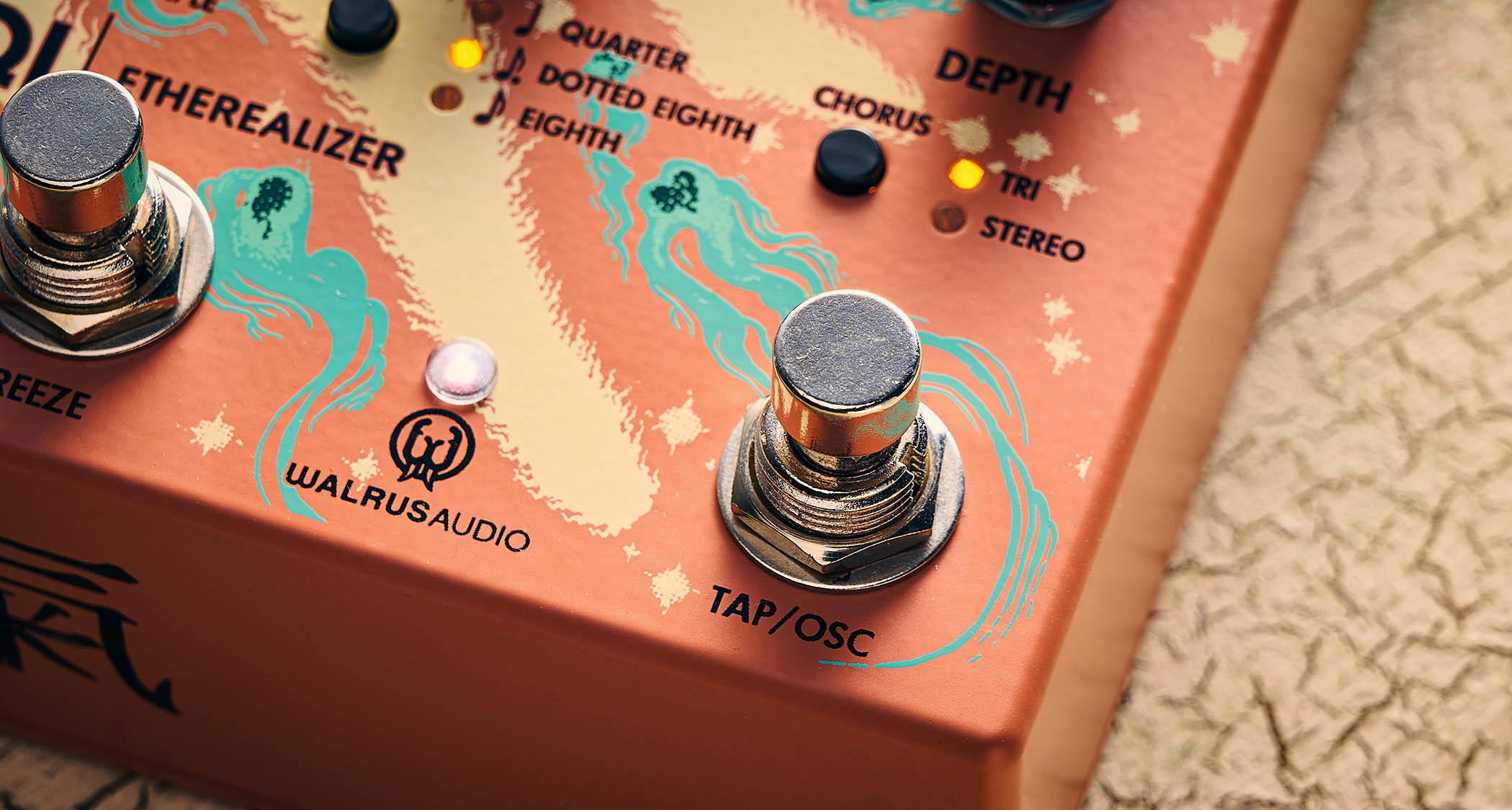
While chorus and delay should be familiar to all players, grain is more of an outlier in guitar effects. Basically, it works by sampling portions (grains) of your playing and playing them back, not unlike a trail of delay repeats but a bit glitchier.
Hearing the effect prominent and dry, it’s a bit of a head-scratcher, but it really becomes effective and starts to make sense when an appropriate amount is fed into a big reverb and you start hearing intricate ambient soundscape washes and shifting pad sounds, which are all the more intricate if you have the chorus and delay active.
You get a choice of two modes, the most intuitive in our view being Grain Cloud. This triggers small samples randomly and is controlled by the X knob, which determines the length of time between grains. Phrase Sample mode triggers grains rhythmically from peaks in your playing, but it seems a little more random than just responding to playing dynamics.

The X knob controls the tempo at which they will be played back, and in its minimum position synchronises the repeated grains in time with the delay repeats to great effect.
Whichever mode you choose, a major role in the sound of the effect is the choice of five playback modes. We really liked the shimmer effect of the X2 mode’s double speed and a pitch shift up of one octave, and the psych-sounding Reverse mode.
The central Freeze footswitch works in conjunction with the grain effect: a press will freeze the grain buffer to capture a section of your playing, so it will loop as long as you want, allowing you to play over the sustained foundation.
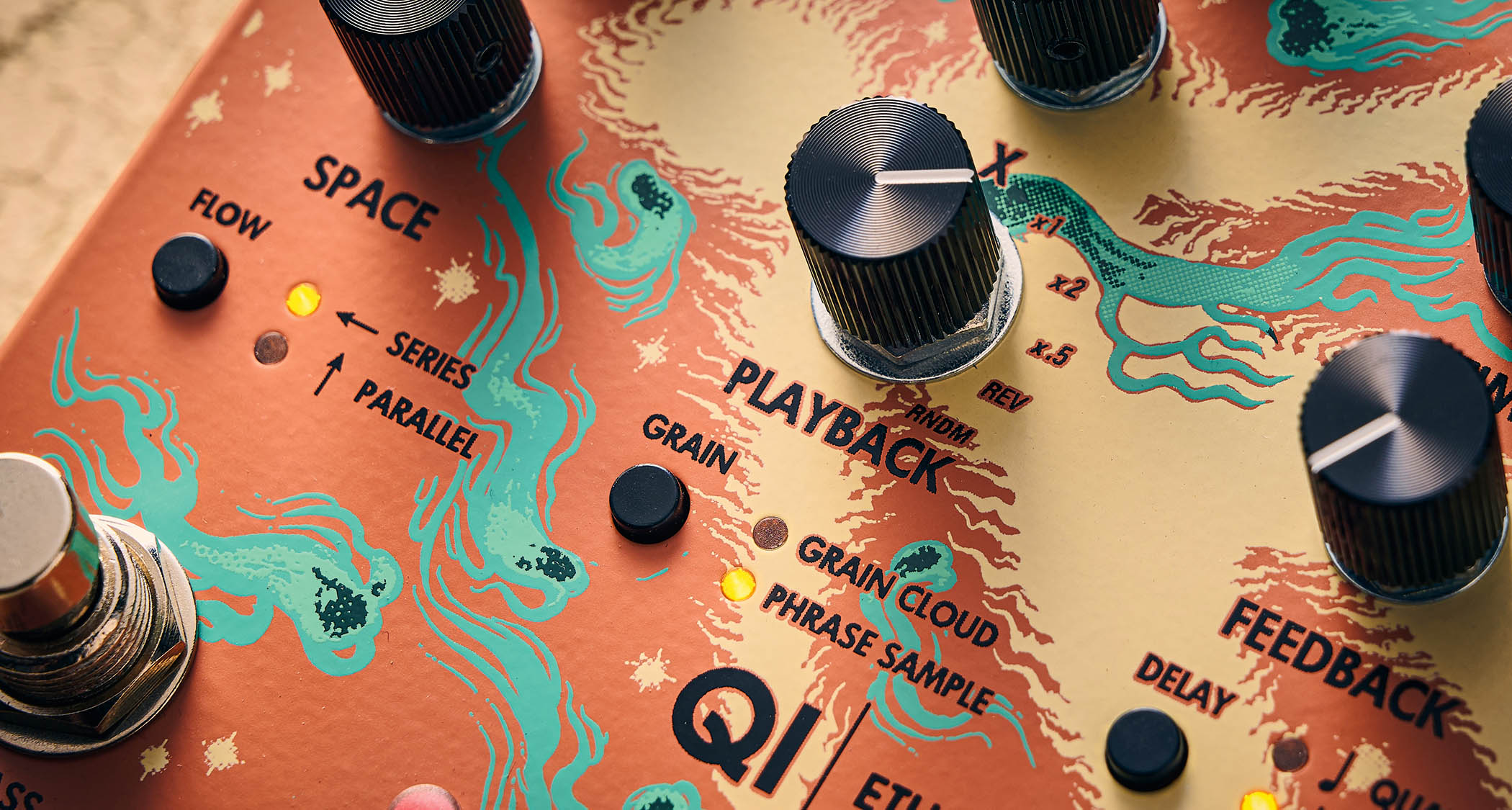
While WYSIWYG immediacy and no menus is one benefit of the Qi, there’s plenty to get your head around and it may take a little time to get used to how to best combine the effects, in particular understanding how the four Mix knobs work together in series and parallel.
Once up to speed, though, there’s a huge range of sounds to explore. Combinations of chorus, delay and reverb may give you all the traditional and, indeed, spacey sounds you want.
However, bringing in the grain effect can either add some underlying ear candy, endowing a more otherworldly textural element to the soundscape, or can be a more prominent and off-the-wall effect that grabs the attention.
Verdict
Verdict: ★★★★½
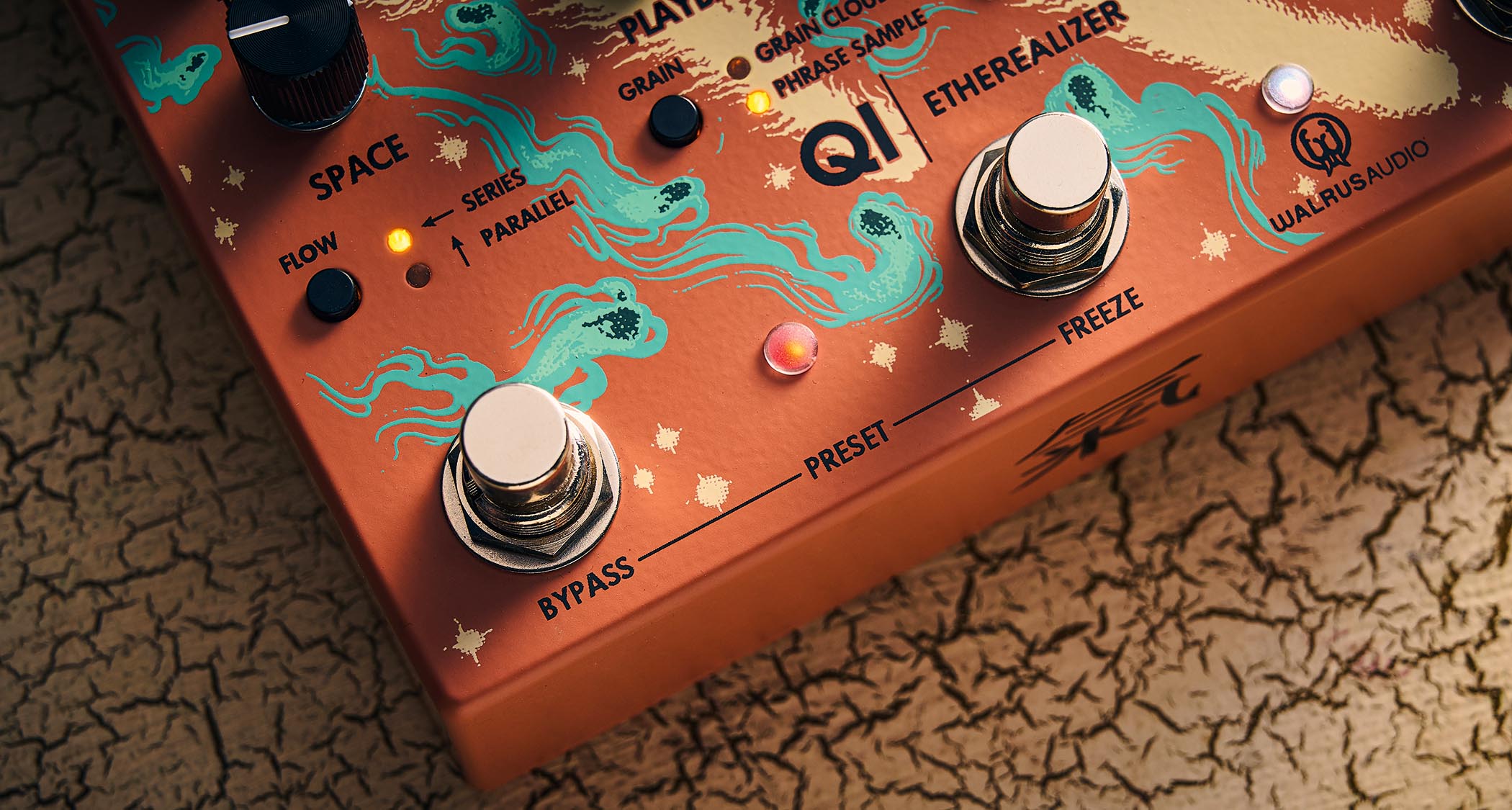
The whole atmospheric/ambient thing may not be for everybody, but for those who wish to embrace it this pedal will take you straight to the heart of the action and give an almost limitless palette of sound.
Looking at it from another angle, just because it can do the wacky and wonderful doesn’t mean it has to all the time.
Quote text here
Guitar World verdict: If you have the money (and let’s face it, this isn’t a budget pedal) this could be a flexible asset for your ’board to deliver conventional single or combined chorus /vibrato, delay and reverb effects when desired and the occasional composite fairy dust if the need arises.
Hands-on videos
Walrus Audio
Yvette Young
Reverb
- “Give it some time and you’ll find a guitar sound you have never heard before. We need pedals like this”: Walrus Audio Mako M1 MKII High-Fidelity Modulation Machine review
- This article first appeared in Guitarist. Subscribe and save.
Trevor Curwen has played guitar for several decades – he's also mimed it on the UK's Top of the Pops. Much of his working life, though, has been spent behind the mixing desk, during which time he has built up a solid collection of the guitars, amps and pedals needed to cover just about any studio session. He writes pedal reviews for Guitarist and has contributed to Total Guitar, MusicRadar and Future Music among others.
You must confirm your public display name before commenting
Please logout and then login again, you will then be prompted to enter your display name.
